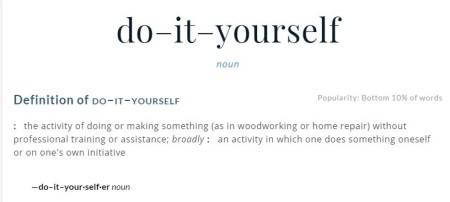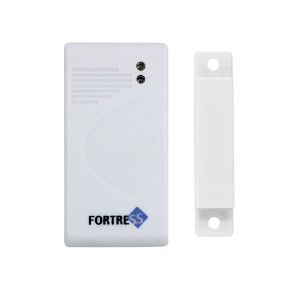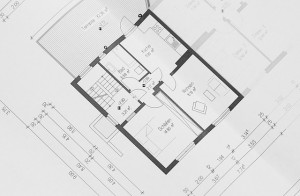
‘DIY’, the abbreviation for Do-It-Yourself, has become a household name in the security system business. First, it means staying away from expensive professional security system installations, thereby saving tons of money. Secondly, there is plenty of money to be saved for professional monitoring services. The usual $40-$60 per month with a long term contract can be reduced to less than $30 per month, and if you want to be your own monitoring center, then the cost for monitoring is reduced to zero. The subject of ‘How to DIY security systems’ is really not that challenging, as those systems are easy to install.
If you are a ‘do-it-yourselfer’, you should really look into installing a system yourself.
 DIY security systems have caught on in the home security business. It’s a big market, and who doesn’t want to save money when protecting your family. The DIY market is similar to the professionally installed security systems. Many choices available, and the homework to pick the right DIY security system is once again up to us.
DIY security systems have caught on in the home security business. It’s a big market, and who doesn’t want to save money when protecting your family. The DIY market is similar to the professionally installed security systems. Many choices available, and the homework to pick the right DIY security system is once again up to us.
I recall way back in my previous home I had a DIY security system and false alerts were getting really annoying. Those DIY systems have tremendously improved, but there are those small irritating problems that pop-up occasionally and manufacturers are working on resolving those.
The usual DIY security systems usually has the following basic equipment:

As you can see with this Fortress Sensor to the right, sensors have two parts which are connected electronically. Once a window is opened, this electronic connection is broken and a signal is sent to the control panel letting the ‘brain’ know that something is wrong.
You may or may not have a monitoring service, and if you do, the control panel will place a call to the monitoring center and according to your emergency call list they will call the police, or fire department, or whichever phone number you have given in an alarm situation.
If you do not have a monitoring service, you or somebody else will be called depending on the phone number you have stored in the system. It’s then up to you if you want to call the police. And by the way, most cities require a permit for an
alarm system which around $23 in the Sun City El Paso. So if you call the police, you may be fined if you don’t have a
permit.
 First thing is to find out how many window/door sensors you need. Every window on the first floor is a possible entry point, so you have to count all windows as well as the doors. I have a staggering eight windows and two doors. In addition, I have a patio in the backyard, and two windows above the patio also need to be considered as entry points. That adds up to ten window/door sensors.
First thing is to find out how many window/door sensors you need. Every window on the first floor is a possible entry point, so you have to count all windows as well as the doors. I have a staggering eight windows and two doors. In addition, I have a patio in the backyard, and two windows above the patio also need to be considered as entry points. That adds up to ten window/door sensors.
Next up are the motion sensors. Try to cover common areas where a burglar would have to go through to get to your valuables. Usually, two or three motion detectors should cover those critical areas.
You should also know if you want to have your system being monitored by an outside company, or if you want to call the
police yourself in case something happens at your house.
 There are plenty of systems available online, and now is the time to compare your needs to the what is available. Most systems have a very limited number of sensors in their base package, and additional equipment may need to be purchased.
There are plenty of systems available online, and now is the time to compare your needs to the what is available. Most systems have a very limited number of sensors in their base package, and additional equipment may need to be purchased.
Sensors usually run between $15 and $25 per piece. If you need plenty of sensors, like I would, check for DIY systems with a bunch of window/door sensors. For my excessive sensor needs, the Fortress Security System would probably be a good choice as it offers ten sensors and three motion detectors.
Check out my reviews of DIY security systems (coming soon) or look at some online reviews to get a good glimpse of what is available. One of the DIY Security systems with good reviews is SimpliSafe, plus they offer monitoring services without a contract for $14.99/month.
Start with the control panel. Install it near your primary entrance door and close to an electrical outlet. You may need to
use a nail or small sheetrock screw to hold it in place.
Most DIY packages have surface-mounted transmitters and magnets that can be installed using a so-called ‘peel and stick’
method. They are easy to place and easy to move if necessary. Stay with your plan where you determined where to put
sensors and motion detectors.
Follow any special instructions by the manufacturer and test the units as specified.
Finally, install your system’s app on your cell phone and do plenty of testing.
If the system you installed has a monitoring option through the manufacturer like SimpliSafe, this would be the time to
give them a call and verify the installation.


One of the main reasons to opt for a DIY security system are savings. As the initial cost for DIY system may be higher than
for a professionally installed system with a monitoring option, you will most likely break even within the first year.
That’s because your monitoring cost is about 50% less than the ADT’s of the world, or your cost may be $0 if you decide to
self-monitor.
It is time to look at some DIY security systems in detail, write some reviews, and see how they stack-up against the big
guns in the security system market. SimpliSafe and Frontpoint look very competitive and are on top of my review list.
If want to find out the basics of home security, check my page Alarm Systems For The Home – How Do They Work?
Thanks for choosing my website, and come back soon. Please leave a comment.
Rudi
